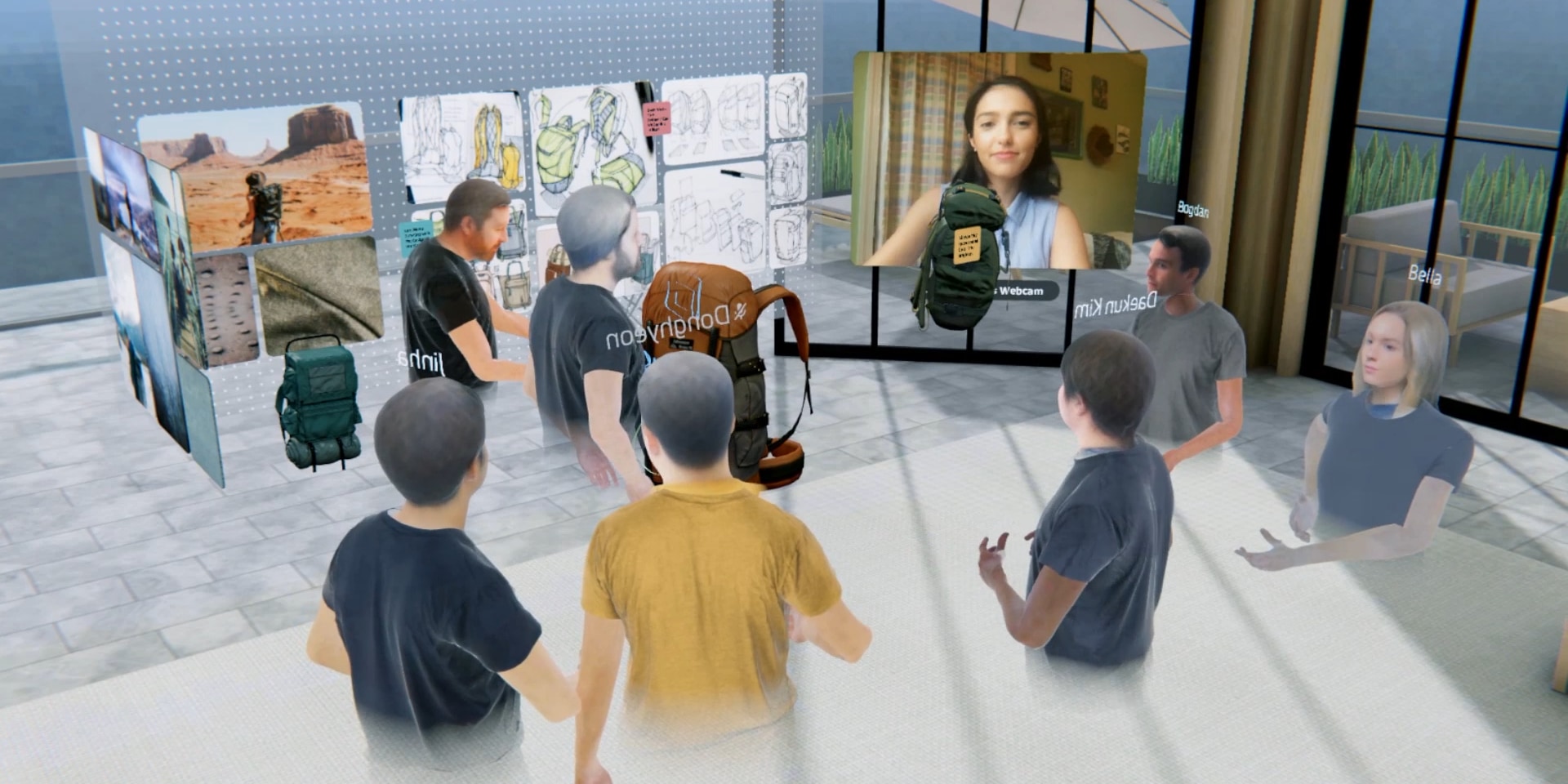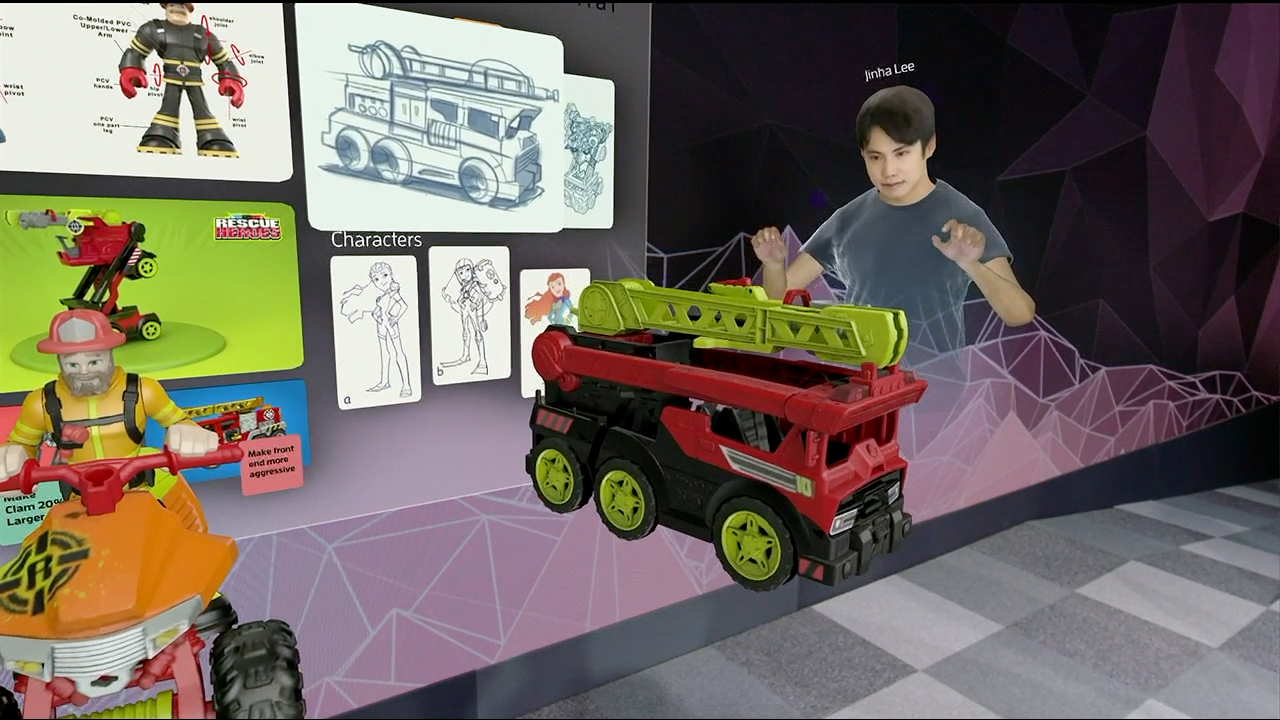Spatial Offers Free Access to AR/VR Holographic Meeting App
Spatial’s holographic meeting app enables people to meet virtually through either augmented reality or virtual reality. When the idea was once floated in 2018 when the startup came out of its stealth mode, it was deemed as way ahead of its time, even overambitious considering the limitations that we still have with the existing technology. However, the company went ahead and developed the product which has been described as the VR version of Zoom.

The company has today taken major step towards the creation of a collaborative XR solution for the enterprise market.
Spatial is now offering enterprises several months’ free access to its premium-level Spatial Pro services for enterprises. This will come with support for users who might not have a full-fledged Augmented Reality or Virtual Reality headset. Businesses using the Spatial enterprise platform will be able to share a Spatial room with their team members simply via a web link which will enable laptop, desktop or mobile device users to join the meetings via a web interface without the need to download the app or wear a headset. Spatial has transported its immersive UI to the web and now makes it possible for 2D screen users to more easily view 3D spaces.
The Spatial platform has already been adopted by some of the leading brands in the world including BNP Paribas, Mattel, Pfizer and Nestle. Its enterprise-level service allows users to speak and see realistically synchronized virtual reality avatars of the other participants in the Spatial rooms. They are even able to interact with documents as well as 3D models. With the Spatial app, it will be possible to have virtual team meetings of engineers, designers, marketers and manufacturers within an office setting even though all the participants might be working remotely away from one another.

The second step taken by Spatial is that it is making a Quest app available generally available from now on which will have a “much improved experience” than the previous private beta version. Facebook is yet to release sale figures for the standalone virtual reality headset or the PC-tethered headset but Spatial has characterized it as the “most widely available XR device today”. Spatial has also gone to refine its user interface in order to make the experience easier on new users.
With the opening up of the immersive collaboration platform and enabling access on the 2D devices that people already have, Spatial is hoping to connect more people without any constraints imposed by space, location or even the pandemic. According to the company, its product has seen a 1000% surge in interest from organizations since countries imposed the self-isolation initiatives following the surge in coronavirus cases. The companies that have shown interest so far range from the Fortune 1000 companies to hospitals, schools as well as small to medium-sized businesses.
VentureBeat has tested the platform and gives a thumbs up to the realistic representation of torso-up 3D avatars, lower latency and its support of the use of hand/controller tracking in replicating the real-arm movements. The platform provides a heightened sense of collective presence compared to what you would get with a 2D video-based collaborative platform. Users on Spatial are even able to share and move around documents, videos, webpages or complex 3D objects within the Spatial virtual room.
The Spatial live demo even featured a human-scale VR walkthrough of a cellular retail store. This subsequently smoothly zoomed out to allow a number of “god” like users to peer into the retail store as a model for determining the optimal use of space as well as the traffic flows. In the Spatial demo, the textures inside the store had low resolution but the Spatial engine smoothly managed the change of scale without any issues. The company has stated that the next-generation Qualcomm XR2-based virtual reality headsets will deliver improvements in the texture detail levels across board.
Before yesterday’s announcement, Spatial was only available for virtual reality and augmented reality headsets like Oculus Rift, Magic Leap One and the Microsoft HoloLens with a simplified PC and smartphone access. Spatial is also collaborating with Nreal and three carriers in the development of a 5G-optimized software for Nreal’s Android-powered Light AR glasses. Users and enterprises that wish to access Spatial Pro for free in the “coming months” can sign up on the company’s website using a supported desktop, smartphone or headset. Spatial hasn’t listed any end date for the free trial.
https://virtualrealitytimes.com/2020/05/14/spatial-offers-free-access-to-ar-vr-holographic-meeting-app/https://virtualrealitytimes.com/wp-content/uploads/2020/05/Spatial-Platform-600x300.jpghttps://virtualrealitytimes.com/wp-content/uploads/2020/05/Spatial-Platform-150x90.jpgTechnologySpatial’s holographic meeting app enables people to meet virtually through either augmented reality or virtual reality. When the idea was once floated in 2018 when the startup came out of its stealth mode, it was deemed as way ahead of its time, even overambitious considering the limitations that we...Sam OchanjiSam Ochanji[email protected]EditorVirtual Reality Times - Metaverse & VR
